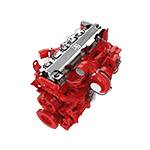Aug . 19, 2024 19:32 Back to list
How to Replace Brake Drums and Shoes for Your Vehicle
Changing Brake Drums and Shoes A Step-by-Step Guide
Brake systems are one of the most crucial components of any vehicle, responsible for ensuring safety by providing reliable stopping power. One essential part of the braking system is the drum brake, which consists of brake drums and brake shoes. Over time, these components wear out and may need to be replaced to maintain optimal braking performance. This article outlines the process for changing brake drums and shoes, along with some useful tips.
Understanding Brake Drums and Shoes
Before diving into the replacement process, it's vital to understand what brake drums and shoes are. Brake drums are cylindrical components that rotate with the wheel, while brake shoes are curved pieces of metal with friction material attached to their inner surface. When the brake pedal is pushed, the brake cylinders force the shoes against the inside of the drum, creating friction that slows down the vehicle.
Signs You Need to Change Brake Drums and Shoes
Several indicators can alert you to the need for replacement
1. Squeaking or Grinding Noise This is often a sign that the brake shoes are worn down and need replacement. A grinding noise may indicate that the metal backing of the shoes is touching the drum, which can cause damage.
2. Vibration If you feel a vibration when applying the brakes, this could mean that the drums are warped or worn unevenly.
3. Pulling to One Side If your vehicle pulls to one side when braking, it may indicate that one side's brake shoes are wearing out faster than the other.
Tools and Materials Needed
Before starting the replacement process, gather the following tools and materials
- Jack and jack stands - Lug wrench - Brake drum puller (if necessary) - Ratchet and socket set - Screwdrivers - Brake cleaner - New brake drums and shoes - Grease for sliding surfaces
changing brake drums and shoes

Step-by-Step Process for Changing Brake Drums and Shoes
1. Prepare the Vehicle Park the vehicle on a flat surface, engage the parking brake, and loosen the lug nuts on the wheel you will work on.
2. Lift the Vehicle Use the jack to lift the vehicle off the ground and secure it with jack stands. Remove the wheel.
3. Remove the Brake Drum If the drum does not slide off easily, you may need to use a brake drum puller to help loosen it. Inspect the drum for any signs of wear or damage.
4. Remove the Brake Shoes Take note of the arrangement of the old brake shoes for reassembly. Remove the retaining springs and clips, and then take off the shoes.
5. Install New Brake Shoes Position the new brake shoes in place, ensuring they are identical to the old ones. Reattach the retaining springs and clips securely.
6. Inspect and Replace the Brake Drum Check the inside of the drum for scoring or deep grooves. If it looks fine, you can reuse it; otherwise, replace it with a new one. Clean the drum with brake cleaner to eliminate dust and grease.
7. Reassemble Place the drum back onto the wheel hub over the new shoes. Reinstall the wheel and lug nuts, then lower the vehicle back to the ground.
8. Test the Brakes Before driving, pump the brake pedal a few times to position the shoes against the drum. Test the brakes at a low speed to ensure everything is functioning correctly.
Conclusion
Changing brake drums and shoes is a valuable skill that can save you money and ensure your vehicle's safety. Regular maintenance of your brake system not only extends its lifespan but also provides peace of mind while driving. If you encounter any difficulties or are unsure about the process, don't hesitate to consult a professional mechanic.
-
Scania Brake Drums: OEM Quality for Optimal Safety & Durability
NewsAug.16,2025
-
R.V.I: Advanced Remote Visual Inspection for Precision
NewsAug.15,2025
-
Discover HYUNDA: Innovative Vehicles, Equipment & Solutions
NewsAug.14,2025
-
R.V.I: Unlock Advanced Insights & Real-time Performance
NewsAug.13,2025
-
Kamaz Brake Drum: Durable & Reliable for Heavy Duty Trucks
NewsAug.12,2025
-
Heavy Duty Iveco Brake Drum - Premium Quality & Safety
NewsAug.11,2025
